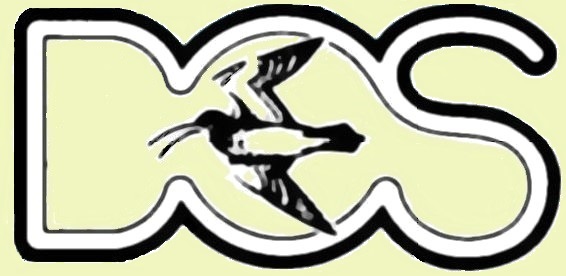






The DOS welcomes all records for birds seen in Derbyshire. The data form the core of our recording aim and conservation activities and are very important to the Society
You can download record slips here and mail completed slips to: Steve Thorpe, 42 Woodland Avenue, Breaston, DE72 3AN to arrive no later than the 2nd of each month
For a record to be valid it needs as a minimum:
Other information is also useful:
This will depend on the number of records you wish to submit:
| A few records | More than a few records | A large number of records | |
|---|---|---|---|
| with same date and site | with same date and site | with multiple dates and sites | |
| typically up to around 10 | typically 11 to 50 | typically more than 50 | |
| use the online Submit a Record form | Either: use the online Submit a Record form | or: use this spreadsheet | use your own spreadsheet see below |
The above is a guide only, use whatever method works for you, we can even take a few records via email
If you see a rarity (see opposite) you can also submit a Rarity Form online see here
If you use a spreadsheet option, please submit to the DOS
Example of how to lay out your own spreadsheet:

What happens to the records? Records are entered into the DOS database and are used for conservation, research and trend monitoring They are also used in the compilation of the monthly Bulletin for members of the DOS and the annual Derbyshire Bird Report
The DOS completed the latest review in early 2024 and it is available here
In an effort to ensure the accuracy of all records of rare species submitted to either the Joint Recorders or to the monthly Bird Notes Compiler all such records must be supported by a full description for consideration by the Rarities Sub-committee. No records of species can be accepted for publication in the Derbyshire Bird Report without full supporting details. All observers are required to give identification details for species in the following four categories. You can submit details of rarities on line using our Rarity Form or click here to download a form.
1. Any National Rarity Species as defined by the British Birds Rarities Committee. A Special Rarity Form exists for this category and can be supplied by the Joint Recorders on request. NB: This Society's Rarities Sub-committee does not make any decision on species in this category and accepts any decisions of the National Committee. The Joint recorders are happy to help document your sighting in the relevant format to the relevant National Committee.
2. Any species not recorded in the county since 1954.
3. The following species which are on the Society's List (list amended February 2024):
Bewick's Swan, Taiga Bean Goose, Tundra Bean Goose, Snow Goose, American Wigeon, Green-winged Teal, Ring-necked Duck, Ferruginous Duck, Scaup, Lesser Scaup, Eider, Long-Tailed Duck, Surf Scoter, Velvet Scoter, Red-breasted Merganser, Black Grouse, Quail (if silent), Golden Pheasant (female), Red-Throated Diver, Black-Throated Diver, Great Northern Diver (away from Carsington Water), Fulmar, Manx Shearwater, Storm Petrel, Leach's Petrel, Gannet, Shag, Night Heron, Cattle Egret (away from the Trent Valley), Purple Heron, White Stork, Glossy Ibis, Spoonbill, Red-Necked Grebe, Slavonian Grebe, Black-Necked Grebe, Honey-Buzzard, Black Kite, White-tailed Eagle, Montague's Harrier, Rough-legged Buzzard, Golden Eagle, Spotted Crake, Corncrake, Crane, Stone Curlew, American Golden Plover, Kentish Plover, Dotterel, Temminck's Stint, Purple Sandpiper, Pectoral Sandpiper, Red-necked Phalarope, Grey Phalarope, Pomarine Skua, Arctic Skua, Long-Tailed Skua, Great Skua, Iceland Gull, Glaucous Gull, Puffin, Razorbill, Little Auk, White-winged Black Tern, Roseate Tern, Sabine's Gull, Ring-Billed Gull, Alpine Swift, Bee-eater, Roller, Hoopoe, Wryneck, Turtle Dove, Red-footed Falcon, Golden Oriole, Red-backed Shrike, Great Grey Shrike, Woodchat Shrike, Hooded Crow, Firecrest (away from known breeding locations), Bearded Tit, Woodlark (away from known breeding locations), Shorelark, Red-rumped Swallow, Pallas's Warbler, Yellow-browed Warbler, Siberian Chiffchaff, Dartford Warbler, Savi's Warbler, Marsh Warbler, Rose-coloured Starling, Nightingale, Bluethroat, Citrine Wagtail, Richard's Pipit, Serin, Twite (away from known breeding sites), Arctic Redpoll, Common Rosefinch, Snow Bunting, Lapland Bunting, Cirl Bunting, Ortolan Bunting, Little Bunting, Corn Bunting
4. Species not covered by categories 1-3, but for which the Joint Recorders still reserve the right to ask for full details.